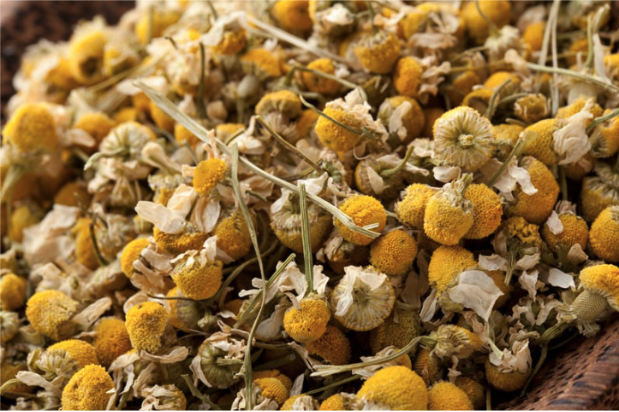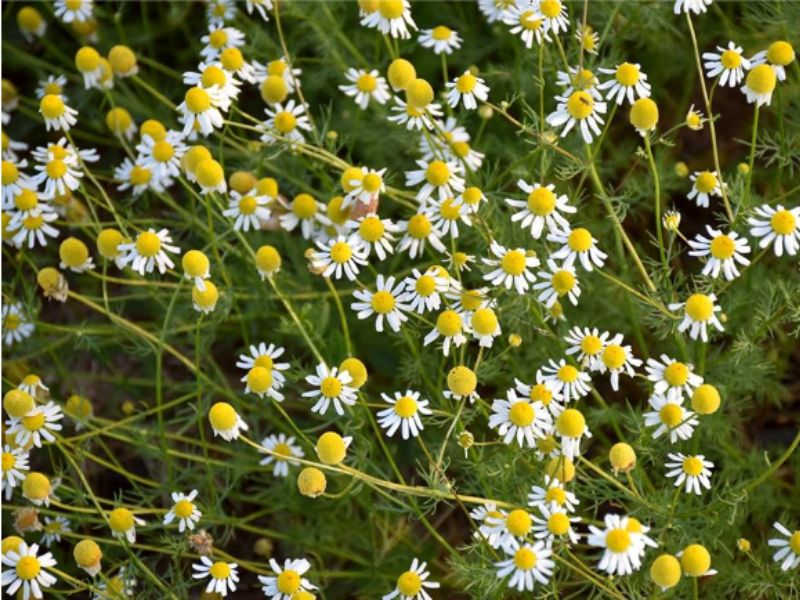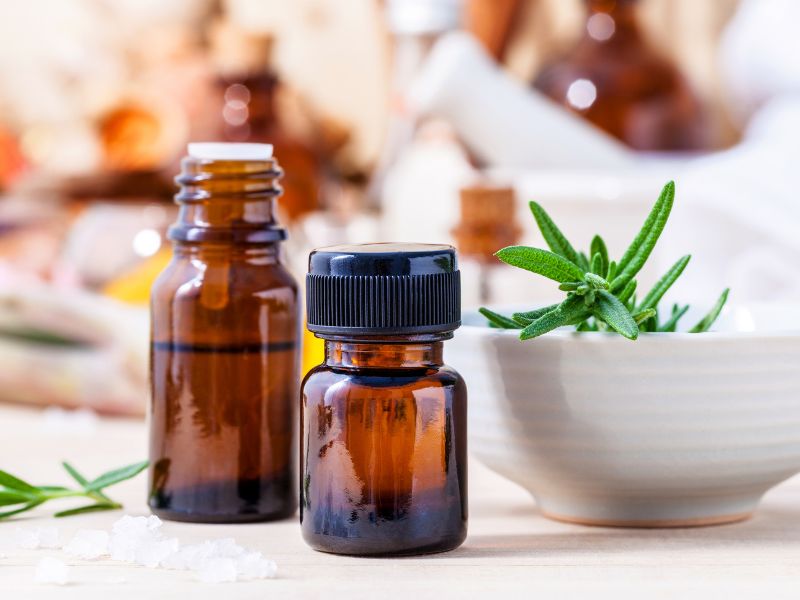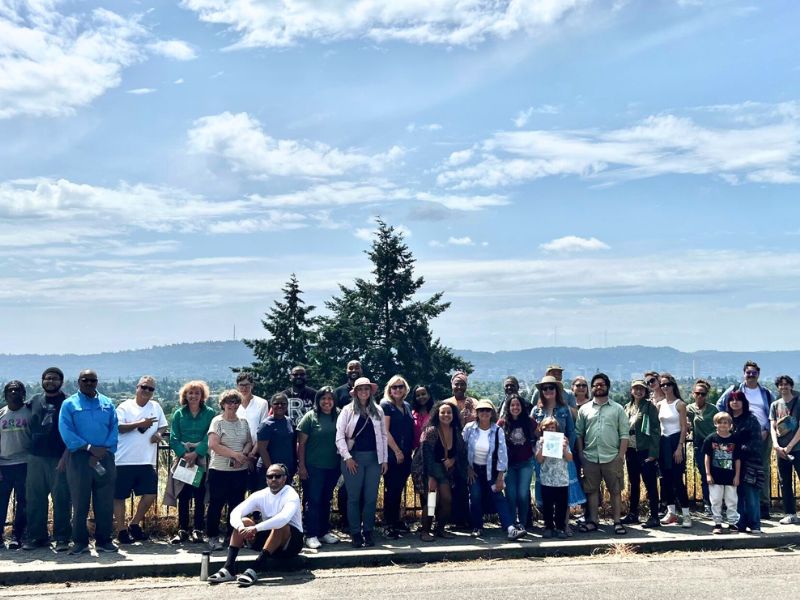Written by Dorene Petersen, ACHS Founding President. First published in the International Herb Association “Chamomile: Herb Of The Year™ 2025” book. Reprinted with permission.
Chamomile herb and essential oil are staples in the world of herbalism and aromatherapy, known for their soothing and therapeutic properties. From supporting stress to calming skin irritations, chamomile has been revered for centuries. Ancient civilizations, including Egypt, recognized its healing potential, and it remains a cornerstone in natural medicine today. In recognition of its remarkable benefits, chamomile has been named the 2025 Herb of the Year™ by the International Herb Association.
A Global Journey to Chamomile Cultivation
 ACHS Founding President Dorene Petersen went on a mission, traveling through Hungary, Nepal, and South Korea, to source certified organic, sustainably produced chamomile herb and essential oil. The journey provided a deep dive into the intricacies of local chamomile cultivation and production practices. While each region has its unique traditional methods, Dorene discovered both encouraging and alarming realities.
ACHS Founding President Dorene Petersen went on a mission, traveling through Hungary, Nepal, and South Korea, to source certified organic, sustainably produced chamomile herb and essential oil. The journey provided a deep dive into the intricacies of local chamomile cultivation and production practices. While each region has its unique traditional methods, Dorene discovered both encouraging and alarming realities.
Some areas maintain pristine, pesticide-free soils and expert harvesting techniques, preserving the plant’s precious dried herb and essential oil content. However, in other regions, the use of pesticides and improper handling during harvest jeopardizes the plant’s therapeutic integrity. This highlights the fragility of chamomile as a medicinal herb and the need for meticulous care at every stage of its cultivation and processing.
Cultivation and Harvesting
Blue chamomile Matricaria recutita (also known as German chamomile) thrives in sandy loam soil with ample moisture. Propagation is typically from tiny seeds that should be planted very shallowly. Adding potassium-rich organic compost can encourage flowering. The harvesting process is labor-intensive, requiring careful selection of flowers at nearly full bloom for optimal medicinal use.
On the other hand, Roman chamomile Chamaemelum nobile prefers acidic soils with ample organic matter and a moist but well-drained location. It is less widely cultivated than Blue chamomile. Harvesting involves removing the flowers and stem tips when the flowers are in full bloom and the petals begin to lie back from the center.
In Korea, Roman chamomile can be found sustainably cultivated among other medicinal botanicals such as lavender, nasturtium, plantain, echinacea, and peony. Watch this virtual field trip from Dorene’s visit to a Korean lavender and chamomile farm at 3,000 feet above sea level to appreciate the intensive harvesting process for chamomile.
The Importance of Sustainable Practices
Chamomile’s delicate flowers require expert harvesting, drying, and distillation to maintain their medicinal properties. Improper handling can lead to contamination and degradation of the essential oil’s potency. Sustainable farming practices, such as organic cultivation and responsible harvesting, are crucial to preserving chamomile’s therapeutic benefits for future generations.
By supporting ethical suppliers who prioritize sustainable farming, we can ensure chamomile remains a powerful botanical ally in herbal medicine and aromatherapy.
Interested in learning more about the history, uses, and science behind herbs like chamomile? Explore ACHS’ accredited Herbal Medicine Programs.
This content is for educational purposes only and is not intended to be medical advice. Always use herbs and essential oils with caution and keep out of reach of children. Use particular caution when pregnant or nursing. Always check contraindications and think safety first! The statements herein have not been evaluated by the FDA. Products are not intended to diagnose, treat, cure, or prevent disease.
Sources:
- Sah, A., Naseef, P. P., Kuruniyan, M. S., Jain, G. K., Zakir, F., & Aggarwal, G. (2022). A Comprehensive Study of Therapeutic Applications of Chamomile. Pharmaceuticals (Basel, Switzerland), 15(10), 1284. https://doi.org/10.3390/ph15101284
- Gupta, V. (2010). Chamomile: A herbal medicine of the past with a bright future (review). Molecular Medicine Reports, 3(6). https://doi.org/10.3892/mmr.2010.377
- Farhoudi, R. (2013). Chemical Constituents and Antioxidant Properties of Matricaria recutita and Chamaemelum nobile Essential Oil Growing Wild in the South West of Iran. Journal of Essential Oil Bearing Plants, 16(4):531-537. https://doi.org/10.1080/0972060X.2013.813219




